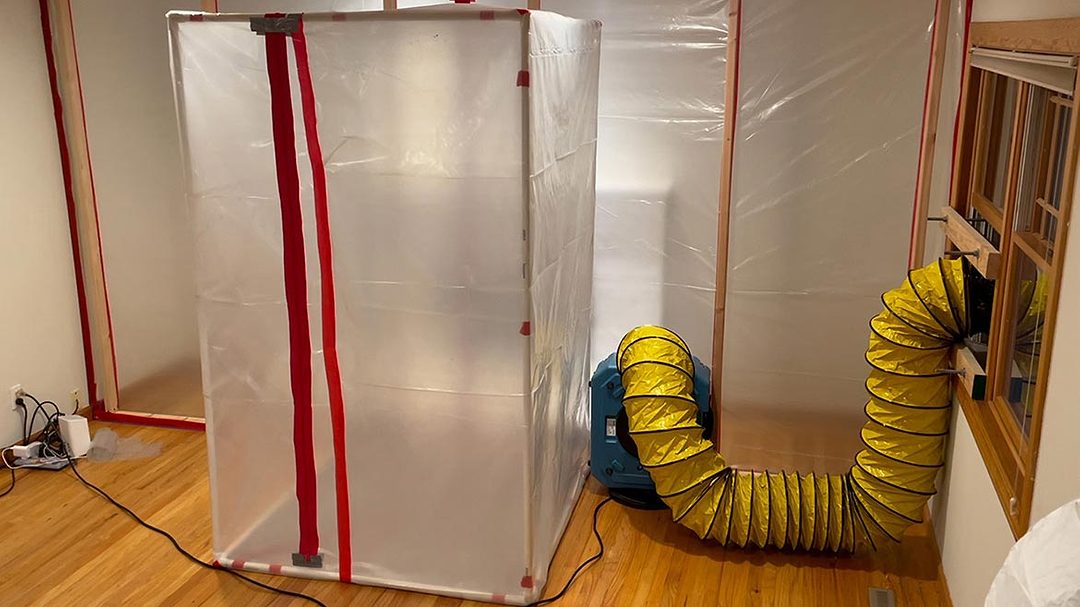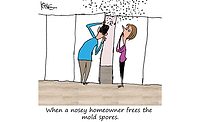Containment: Is It a Choice or Just Science?

Traditional containment.
Photo credit: Keith Gangitano

Reusable containment.
Photo credit: Keith Gangitano


Before we talk about choice, let’s first establish what is fact and, by default, what is science. Let us agree on a baseline that answers this most basic question: What is containment? Even answering this seemingly simple, straightforward question is fraught and, by design, sets up the premise of this whole article.
Let’s start with the least controversial, medical containment. It is a highly specialized, rare and expensive form of containment reserved for highly contagious and deadly diseases. There is no debate about when this is necessary, think COVID-19 and tuberculosis. It is so well proven that if you ask someone to be anywhere near a known pathogen or toxin without this level of protection, you will learn very quickly that a person's beliefs quickly take a backseat to science and proven techniques.
At the other end of the spectrum we have the basic dust barrier where you will find no zippers, doffing chambers or manometers, just overlapping plastic sheeting, some sticks, tape and (hopefully) an air scrubber. At one time, we did not understand the long-term effects of some apparently less acute exposures, so this very low bar was seen as excessive. Excessive that is, until it became the standard and then the standard eventually became the substandard.
The goal posts are necessarily on the move and yet, shockingly, even as the science improves and our understanding grows with it, some of those archaic practices can still be found today, especially in the largely unregulated world of mold abatement where “mold lickers,” that invariably come in with the lowest bid, often come come out on top. Somewhere in the middle represents the standards of today – plastic, poles, tape (lots of tape), adhesive, wood frame, metal frame, fasteners, negative air, a PVC doffing chamber and prayers (lots of prayers). Oh, and liability insurance – lots of liability insurance.
Besides these highly contrasting forms of containment, the definition also encompasses processes used in science and medical labs, chip manufacturing, space exploration and more. But what about water (vapor) containment, or heat? We know that hot moves to cold and wet moves to dry. But how and at what rate? When is chamber drying advantageous or even practical? We know that if we contain the wet and raise the temperature, we can dry faster and with far less secondary damage. So when is vapor and heat containment (a.k.a. chamber) the best option?
I can already hear the science nerds out there correcting me, so I’m going to beat you to it. Chamber is also about volume reduction, I know. So what about it? Heat, RH and volume are three of the four factors that get it dry. Add in air movement and you are in the water-loss remediation business. Let the headaches begin.
As restoration professionals, you are tasked with answering so many questions, with certainty, that are often not black and white but 50 shades of grey.
As restoration professionals, you are tasked with answering so many questions, with certainty, that are often not black and white but 50 shades of grey. The constant change in official guidelines and best practices reflect the simple fact that the goal posts are never fixed. Couple this uncertainty with the fact that, as a restoration contractor, you must insert yourself into the contentious relationship between the customer (building occupant) and the payer (landlord, insurance company, property manager, etc.), each with competing interests, and you have a very awkward “throuple.” Oh yeah, and then you have the arbiter in the middle that does their best to establish fair pricing and reasonable expectations by attempting to standardize and box in something that is often, quite literally, a “fluid situation” and that can’t quantify, and so often ignores, the real hot button issues.
That unlikely foursome sucks, and will never end up in anyone’s search history, incognito or otherwise. With all of these factors and players, it means that you don’t always have the time, the resources, the people power, bandwidth or the certainty to answer all of these questions and satisfy everyone’s needs. The harsh reality is that sometimes good enough has to be good enough, and some uncomfortable friction with a relative stranger is all you’ll ever get out of it. Not everyone always gets a happy ending.
All innuendo aside, the question and the title of this article was, “Is it a choice or is it just science?” I’m convinced that the answer lies in the space between legality and/or liability, and the bottom line. Hideous piles of plastic in our landfills or incinerators aside, containment is never a bad thing. Just like running a HEPA on every job site is never a bad thing, building containment is also never bad, from a purely scientific perspective. These decisions, however, do not happen in a vacuum. The contractor must decide if the return on investment is there. Who will pay for it? Who will set it up? Will it fail and need repairs? Do you have the time and is it in your best interests (profit) to do that? From a planetary perspective, will the waste generated be justified by the results? These questions need to be answered before the first roll of duct tape comes out of the van.
The industry is doing their best to meet you where you are and answer these questions for you. In fact, some very well-known and loved manufacturers like ZipWall have continued to innovate in this space, providing not just better poles and accessories, but planet-friendly, reusable curtains. Another, newer player in the reusable dust curtain space is Re-U-Zip, which introduced magnetic closures instead of zippers and a reusable dust curtain. Also, Efficient Drying Systems, creating customizable, reusable lay-flat ducting, and AIRWALLS by Zeppelin, creating an inflatable, reusable containment alternative, are stepping into the breach.
Learn more about innovations in restoration
It has become abundantly clear that containment, HEPA filtration and increased efficiency are all trending in this industry. So, as the science improves and your implementation of best practices, regarding microorganisms especially, come under increased scrutiny, you have to ask yourselves: Do you really have a choice or is it just undeniable science? Who is going to be the last one to show up with a box fan and a sandwich bag to the job site?
Looking for a reprint of this article?
From high-res PDFs to custom plaques, order your copy today!








